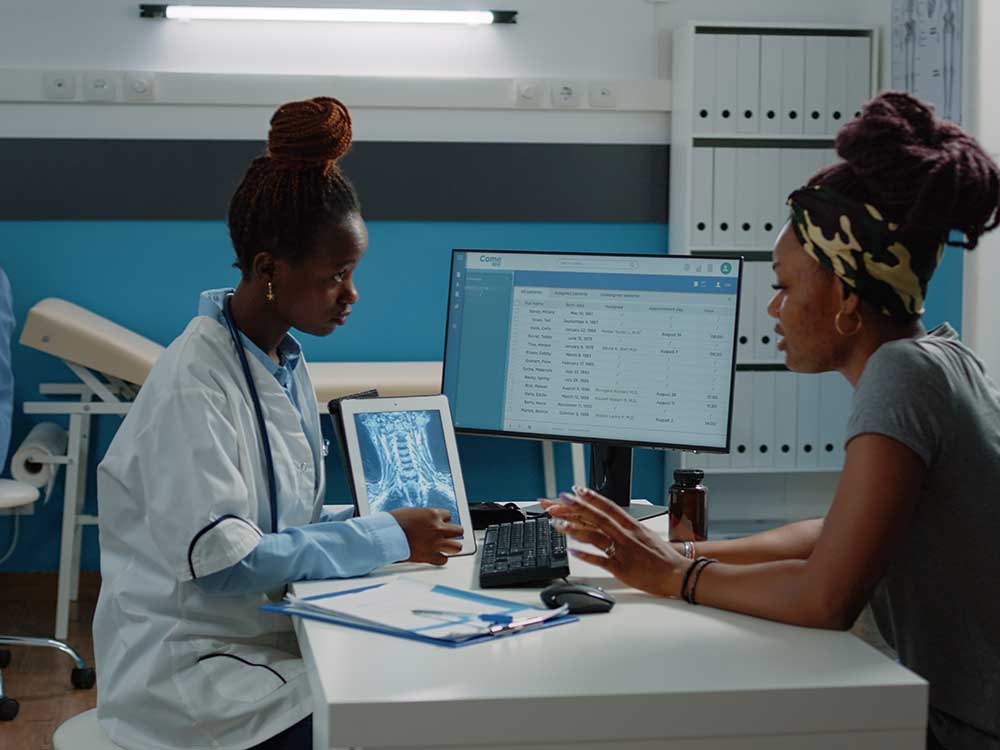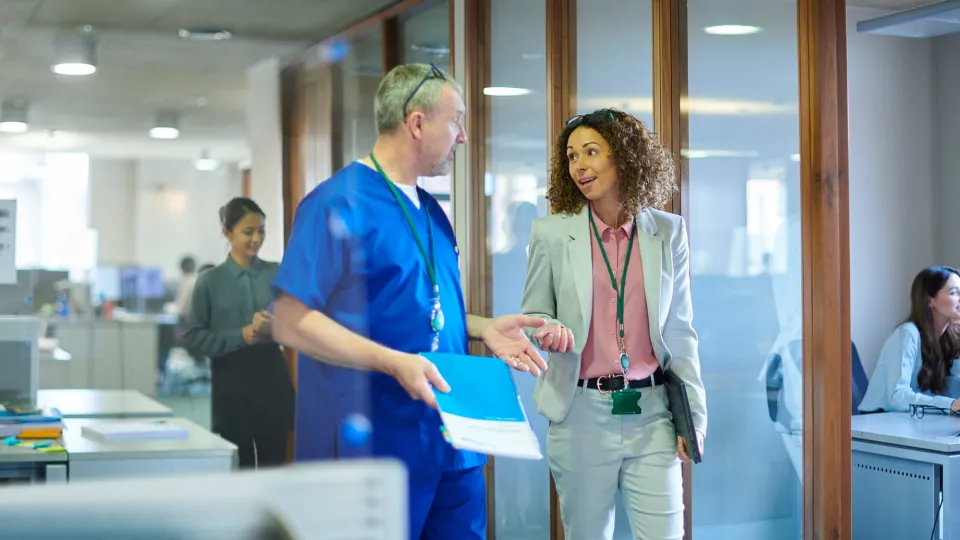Just How to Enhance Efficiency in Medical Administration with Modern Devices
Just How to Enhance Efficiency in Medical Administration with Modern Devices
Blog Article
Finest Practices in Medical Management for Improving Performance and Minimizing Costs
In the ever-evolving landscape of medical care, the quest of ideal techniques in clinical administration is critical for enhancing effectiveness and suppressing expenses. By incorporating innovative technologies such as digital health documents and telemedicine, health care service providers can improve operations and improve patient care. Innovation alone is not a cure all; optimizing resource allotment and cultivating collaborative communication among treatment teams are equally important. As organizations aim to balance top quality and cost, what methods should be prioritized to achieve these double objectives? The response to these inquiries hold the secret to a more sustainable health care system.
Leveraging Advanced Innovation
The integration of electronic solutions right into healthcare systems has transformed the way facilities operate, enhancing processes and improving client treatment. By streamlining client info, EHRs get rid of the demand for cumbersome paperwork and assist in seamless interaction among healthcare companies.
Telemedicine is an additional technological improvement that has transformed person communication. It provides ease for both clients and healthcare specialists by making it possible for remote consultations, which can reduce the requirement for in-person sees and optimize appointment scheduling. Furthermore, telehealth platforms can extend healthcare accessibility to rural or underserved locations, bridging gaps in care shipment.
Additionally, making use of Artificial Intelligence (AI) and maker discovering is coming to be progressively prevalent in anticipating analytics, permitting for very early discovery of potential health and wellness concerns and even more enlightened decision-making. These technologies, when integrated successfully, can boost analysis precision and personalize client treatment plans, ultimately bring about enhanced medical care results and operational performance.
Optimizing Resource Allowance
Reliable resource allotment is vital for making best use of the performance of clinical administration. By purposefully taking care of sources such as personnel, equipment, and funds, healthcare facilities can dramatically improve their operational performance, enhance client end results, and minimize unnecessary expenditures. The primary step in maximizing source allotment involves performing a detailed analysis of present assets and identifying areas where resources might be underutilized or overextended. This assessment should be data-driven, utilizing metrics and analytics to educate decision-making procedures.
Focusing on resource allotment based on individual demands and service needs is essential. Carrying out flexible staffing versions can also enhance labor sources by adjusting workers appropriation in response to fluctuating individual volumes.
Funds should be meticulously monitored and assigned with calculated foresight to support both temporary operational requirements and long-lasting institutional objectives. This includes investing in training programs that enhance staff proficiencies and taking on energy-efficient methods that lower operational prices (medical administration). Eventually, an optimized source allotment strategy cultivates a lasting medical care setting that is responsive, effective, and monetarily prudent
Streamlining Operations Procedures
When healthcare facilities purpose to enhance operational efficiency, enhancing operations processes ends up being a critical focus. Effective process minimize redundancy, eliminate unneeded steps, useful site and boost sychronisation among medical care professionals. This approach not just accelerates solution delivery yet also enhances the quality of person treatment.

Next, technology combination plays a significant role in improving workflows. Carrying out electronic wellness documents (EHRs) and electronic medical professional order entry (CPOE) systems decreases documentation, minimizes human mistake, and guarantees information comes to all relevant personnel. In addition, leveraging telemedicine platforms can enhance individual appointments and follow-ups, lowering the stress on physical framework.

Ultimately, streamlined workflows cause set you back decreases and boosted person fulfillment, promoting a much more lasting health care environment.
Enhancing Information Monitoring
Building upon structured workflows, maximizing data monitoring ends up being an essential part in advancing medical care management. Efficient data administration systems are vital for preserving exact patient documents, improving decision-making, and making sure compliance with governing standards. By implementing robust data management options, healthcare centers can improve the quality of individual care while simultaneously minimizing operational prices.
One trick facet of boosting information management is the integration of advanced digital health record (EHR) systems. These systems promote the seamless exchange of client info across various departments, lowering duplication of tests and reducing mistakes. A properly designed EHR system supports information analytics, enabling medical care carriers to determine fads and make informed decisions concerning person care.
Additionally, securing person data is vital. Taking on detailed cybersecurity procedures, consisting of security and regular audits, makes sure the stability and privacy of sensitive information. This not only safeguards patients yet also maintains the establishment's reputation.
Investing in team training is an additional critical variable. Educating healthcare specialists on data monitoring methods enhances their capacity to effectively use innovation, bring about enhanced my company individual results. To conclude, improving data monitoring with sophisticated innovation and thorough training is vital for accomplishing performance and cost reduction in clinical administration.
Fostering Collaborative Interaction
A crucial part beforehand medical administration is fostering collaborative communication among healthcare experts. Effective interaction is paramount for making certain seamless patient treatment, maximizing treatment results, and lessening errors. By encouraging open dialogue and YOURURL.com control throughout multidisciplinary teams, health care organizations can improve their operational efficiency and reduce unnecessary expenses.
Central to this method is the integration of interaction technologies such as digital health documents (EHRs) and secure messaging systems, which assist in the rapid exchange of critical patient info. These devices enable doctor to accessibility and share information in genuine time, making certain that all group participants are educated and aligned in their decision-making processes. In addition, routine team meetings and interdisciplinary rounds can even more advertise a culture of partnership and accountability.
Educating programs focused on improving interaction abilities are also necessary. These programs can aid team develop the capacity to communicate information clearly and listen actively, hence lowering misunderstandings and promoting a supportive workplace. In addition, adopting standardized interaction protocols, such as SBAR (Scenario, Background, Analysis, Suggestion), can enhance the exchange of details, making sure that essential details are conveyed succinctly and successfully. Inevitably, promoting collaborative interaction causes boosted health care delivery and price savings (medical administration).

Final Thought
Incorporating innovative modern technology, such as digital health and wellness records and telemedicine, alongside maximized source appropriation and structured workflow processes, is vital for enhancing efficiency in clinical administration. Effective information administration and cultivating joint interaction amongst health care groups are crucial for lessening redundancies and enhancing care high quality. By prioritizing precautionary care and taking part in quality renovation efforts, health care organizations can accomplish significant expense savings and improved patient end results, thus making sure lasting medical care distribution in a progressively complicated atmosphere.
Report this page